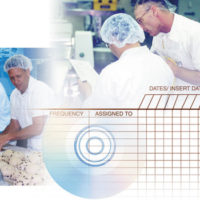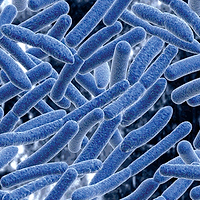Food sanitation continues to evolve year after year. It is safe to say that if it weren’t for a team effort between your facility and skilled sanitation workers, the ability to produce a quality and wholesome product would be severely challenged. But what will the challenges of tomorrow—with a globalized food supply chain and increased consumer and regulatory demands—look like?
Anyone reading this article would love to see a “crystal ball” for the future of food sanitation. We can’t read the future, but here are some of the key developments in our industry that we think will influence all efforts to provide effective food sanitation.
The Global Food Safety Initiative (GFSI). GFSI certainly adds to our awareness of what takes place in food production facilities. The GFSI mission statement proclaims safe foods for consumers everywhere: reduce safety risk and manage cost by eliminating redundancy, and provide consistent and effective global food systems. The emergence of Safe Quality Foods, British Retail Consortium and other third-party auditing groups has contributed to initiatives like GFSI, reminding us that nothing good comes easy.
The Food Safety Modernization Act (FSMA). FSMA rocked the food industry by raising the bar on safety and prioritizing improvements to food-related public health. FSMA’s long list of required documentation for identifying food safety risk, raw materials, manufacturing and testing seems endless.
The Global Harmonization Initiative. “Protecting the brand” got a little more exciting for food production facilities, thanks to this science-backed initiative to align food safety regulations worldwide.
Even without a crystal ball, it’s clear that the fundamentals of cleaning are consistent with food sanitation:
1. Temperature. When rinsing the soil load left behind from the production process, temperature is critical to the success of your sanitation program. Temperature can be defined as warm or hot, depending upon the soils being removed. It can also be defined as the “right number” in utilizing your sanitizer. Typically, “temperature” means ambient temperature. If you maintain a range of 70 °F to 95 °F, it enables the sanitizer to reduce bacteria levels to safe and acceptable numbers.
2. Agitation. Without some form of mechanical agitation, whether brushes, green pads, etc., biofilm control will be a challenge in your facility.
3. Dilution control. Dispensing systems are a must in each facility to ensure consistency of product usage and performance. We all are charged with making sure we “maintain your budget.”
4. Time (contact, cling and dwell time). For detergent to work on food contact surfaces, walls, etc., how much time it has to work is still a major determinant of success.
So much for the tried and true in food sanitation. Maybe now we can peek into that elusive crystal ball to look ahead and help position your facility to be effective. Collecting electronic data will become more of a day-to-day function for all people and facilities. Whether communicating with your smartphone, tablet, etc., a lot of information is exchanged regularly. The time is now for you and your facility to evaluate your abilities to store information electronically. When those third-party audits, customer visits, regulatory visits, etc. take place, you need to be able to instantly pull up detailed sanitation information. By doing your quality inspections electronically, you can easily look at trending reports that acknowledge the effectiveness of your sanitation program. This provides you with a competitive advantage because the technology makes that information easier to share with your customers.
As you think about the future and your electronic data, your strategic partnership with your sanitation/chemical partner can play a decisive part in achieving your goals. The right partner can take your facility to a higher level of sanitation and food safety. An integrated data storage system means you have detailed, real-time access to how your facility is performing in your sanitation goals, enabling you to head off problems and respond to issues effectively. We realize that for some this is not going to be an immediate success story. The point of this article is to challenge your thought process. Give careful consideration to research. Investigate whether what you are doing is in the best interest of your company. Some already have the financial resources and have already incorporated electronic data within their systems. For others, early discussions are ongoing, with implementation times and dates to be determined. Nevertheless, the time is now to give careful consideration, because ultimately, electronic data collection will certainly streamline your sanitation process.
Finally, “change” may be the most common word in all our vocabularies, given the demands and expectations we must meet and/or exceed with food production, safety and sanitation requirements. In today’s world, it is best for us to make a commitment to reinvent ourselves on a regular basis. If we don’t, we could end up facing a challenge that makes it very difficult to protect our brand. Trust that electronic sanitation data ultimately contribute to helping you and your team generate the results you plan for.
p>




